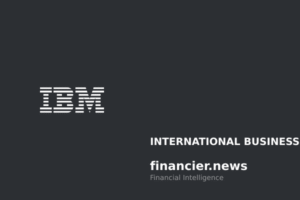$SPX $DXY $TLT
#USDebt #Finance #Markets #Bonds #Economy #Investing #FederalReserve #InterestRates #Geopolitics #Liquidity #Inflation #StockMarket
The ongoing discussions around U.S. debt and financial strategy have taken an unusual turn with the introduction of what commentators are calling the “Mar-a-Lago Accords.” TS Lombard, a macroeconomic research firm, likens this proposed effort to a “classic cram-down,” a term commonly used in financial restructurings to describe imposed settlements on reluctant creditors. In this scenario, it suggests an aggressive approach by the U.S. government to manage its ballooning liabilities amid increasing pressure from rising interest rates and fiscal deficits. Given the sheer magnitude of U.S. debt, any attempt to restructure or manage liabilities in such a manner may have significant consequences for global financial markets, government bondholders, and central bank policies worldwide.
One of the primary concerns surrounding U.S. debt management is the increasing cost of servicing it. With the Federal Reserve maintaining elevated interest rates to combat inflation, the U.S. government faces mounting pressures to manage its expenses and avoid a liquidity crisis. A “cram-down” approach would imply forcing bondholders or creditors into restructuring terms that may not be favorable to them but could provide temporary relief to the Treasury. Analysts fear that such strategies, if aggressively pursued, could shake investor confidence in U.S. Treasuries, leading to volatility in currency markets and an increased risk premium on government borrowing. Such a maneuver could also trigger higher Treasury yields, potentially setting off ripple effects across equity markets, corporate borrowing costs, and global economic stability.
While liability management strategies are not uncommon at a corporate level, applying similar financial engineering techniques to sovereign debt is a delicate matter. Any signals suggesting U.S. policymakers might engage in non-traditional or coercive restructuring efforts could spook investors, particularly foreign holders of U.S. Treasuries like China, Japan, and major sovereign wealth funds. A significant exit from U.S. bonds or a repricing of risk could lead to sharp movements in the U.S. dollar, treasury yields, and even emerging market economies reliant on dollar-denominated borrowings. Additionally, the Federal Reserve would likely face difficult choices in balancing financial stability with its mandate to control inflation, possibly considering new monetary interventions to offset risks stemming from a credibility loss in U.S. sovereign debt markets.
In the broader economic context, any forced debt management approach could impact liquidity conditions across asset markets, affecting everything from equity valuations to private credit spreads. Companies and investors rely heavily on stable Treasury markets for pricing risk across financial instruments, and any policy missteps could lead to unintended disruptions. Furthermore, with political considerations influencing fiscal decisions, uncertainty could rise ahead of major elections, amplifying market volatility. Whether the so-called “Mar-a-Lago Accords” would materialize or comply with existing legal and financial precedents remains to be seen. However, market participants and policymakers alike will closely watch any developments, as the implications stretch far beyond the U.S. and into the broader global financial system.











Comments are closed.